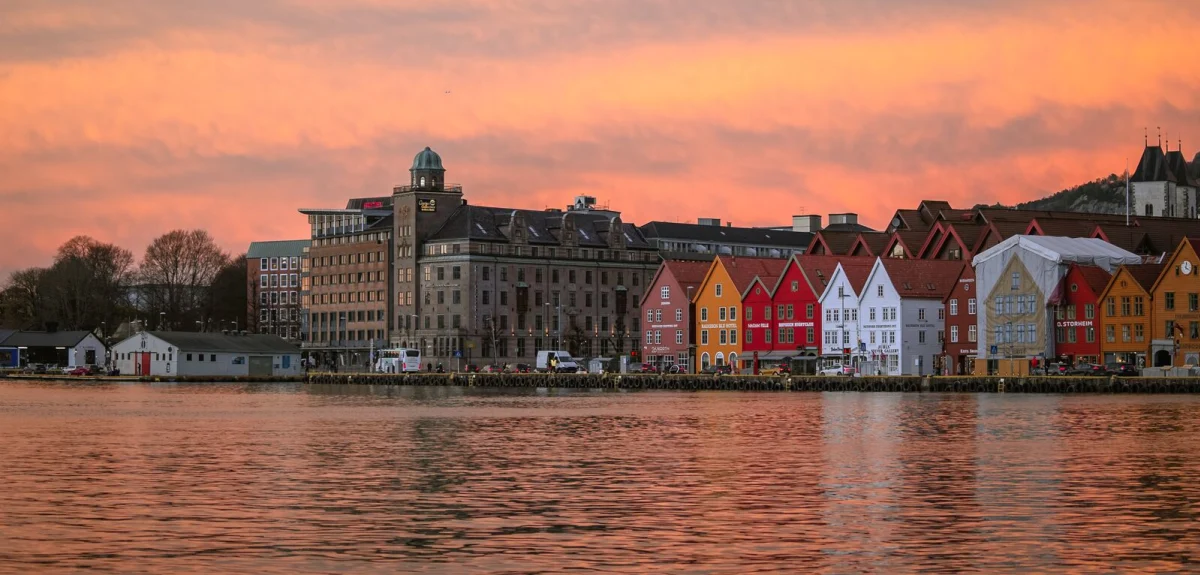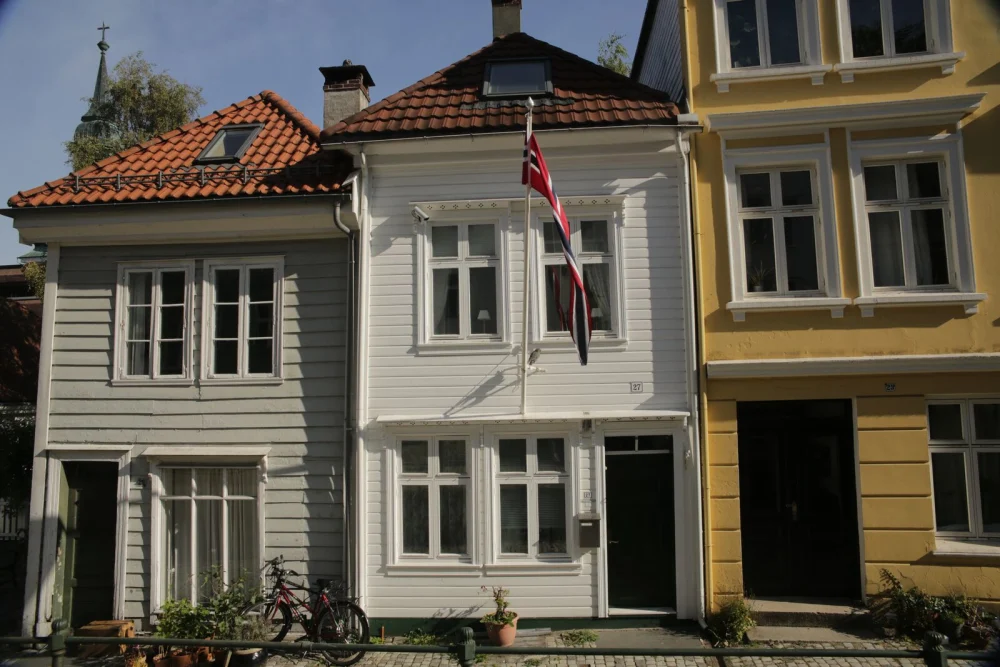
See Bergen through an architect's eye
A unique architectural heritage.
With an architectural heritage you won’t find anywhere else in the Nordics, the beauty and romance of Bergen stands unparalleled and almost every street corner unveils a new treasure.
One of the city’s key buildings, the magnificent Holmefjordboden that rises majestically out of the water, was recently given protected status. Around the mid-18th century, it was one of the most important fish storehouses in the city. “Holmefjord is a significant representative of the period when Bergen was at its most active on international export markets,” says city architect Maria Molden.
“It’s a magnificent work of timber architecture on the quayside, with its image reflected in the water. From the 18th century onwards, the port area was full of these buildings. They were created to preserve food products – fish from the North Sea was a delicate product that called for spacious and dry premises where it could mature under the roof. The buildings also had to be close to the water so that their huge doors could open straight onto the boats that would ship the goods onwards.

Development of the center of Bergen started in and around the central bay Vågen and then spread to Sandviken, where Holmefjordboden is located. The layout is condensed and compact, set between high mountains and a deep fjord, but as it was a Hanseatic port, Bergen was never isolated from the world. Quite the opposite, in fact. Raw materials and resources came from the sea to the north, the surrounding area and the mountains. Germany, the Netherlands and even Italy and France were good business partners and at certain times, immigrants from Europe even outnumbered Norwegians.
Fires in 1248, 1561, 1855 and again in 1961 left their mark on the city, though, and resulted in extensive damage, demolition and redevelopment. Bergen also suffered badly during World War 2. Bryggen, also known as Tyskebryggen, a series of Hanseatic commercial buildings along Vågen that are now a Unesco World Heritage Site, was one such area that had to be reconstructed, as were the valuable medieval buildings Håkonshallen and Rosenkrantztårnet that date back as far as the 12th and 13th centuries.
“I really recommend wandering through these streets with their wooden buildings and onwards towards the mountains,” Molden says. “You may not meet many locals, but they do live in these small houses, and the narrow alleys are part of modern life here. If you come here during the festival period, you should catch a concert at Håkonshallen. The main city square, Torgalmenningen, was totally rebuilt in a Neo-classical style following a fire in 1916. In an axis from the theater to the highest surrounding mountain, Ulriken, the city is full of flowers virtually all year around. Festplassen, where people gather to celebrate Norway’s national day on 17 May and for other festivals and leisure activities, is a rare open space in Bergen. From here, you can see a large variety of developing eras and statement buildings, all in one 360° sweep from the library to the power station, Rasmus Meyer’s collections and the art hall to Stenersen’s collections in modern 1960s architecture, the sober modernism of the Hotel Norge, Handelens Hus, Rådhuset and the old, low-rise brick buildings along Kaigaten.

“Bergen is best experienced bit by bit,” Molden says. “By this, I mean you need to feel how close the mountains and city are to each other. Use the view to gain an overview, and from there drill down into the culture and more intimate details. If you take the funicular up to Mount Fløyen, enjoy a beer at the Fløien Folkerestaurant and then make your way down via the hairpin Fløisvingene path to Fjellveien. It’s also the world’s most beautiful jogging trail, with the best-ever viewing point from a stone bench at Skanselien.” From there, Molden advice is to head back to Skanseparken and wander through one of the most tightly-packed wooden building districts in Norway – and also the biggest fire risk. Elsewhere are residential areas Promsgate, Blekabakken, Øvre Fjellsmug and down to the oldest school in the Nordnes area, Christie Krybbe, which was originally for illegitimate children of which there were many in the area behind Bryggen. Bergen was an affluent city able to provide education for all.
As Bergen’s city architect, Molden’s role is to safeguard the integrity of its buildings, both old and new.
“The urban layout with the public square is what most shapes the city. It’s a place to meet, an activity center and somewhere to talk. In that sense, it represents the foundation of the so-called Bergen temperament, which is chatty and expressive.
“Until recently, expansion didn’t start close to the city center – it took place on the other side of the mountains. This meant that the center didn’t face the kind of major changes and upheaval that many other towns and cities did,” Molden says.
“Having said that, we don’t want to be some kind of living museum. We have numerous listed buildings that give us a distinctive character and identity and that help tell the history of our city, but they’re part of everyday life here and in full use, in the same way that new buildings are.”
Text by Helle Benedicte Berg